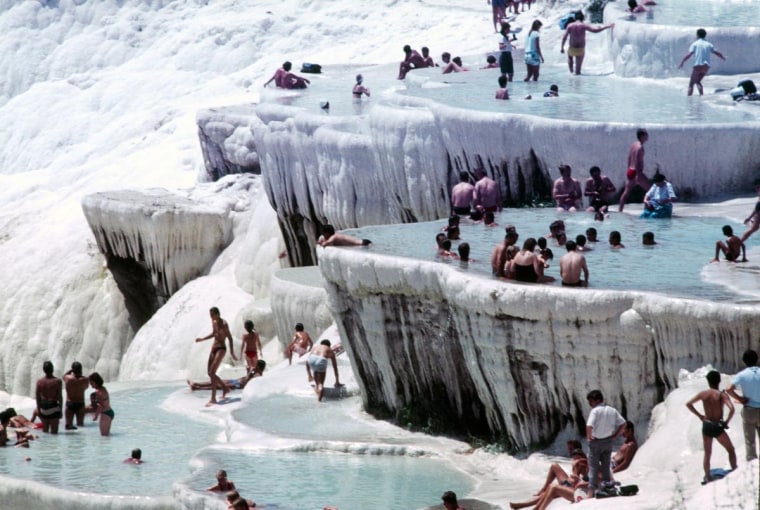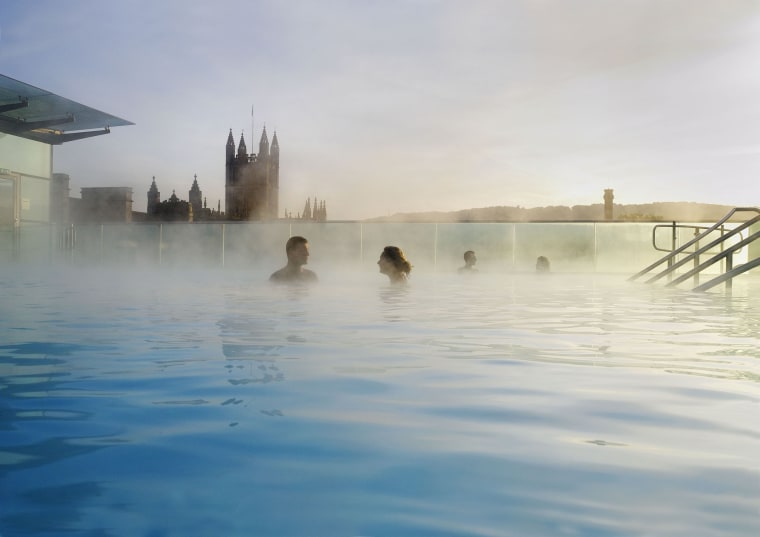I’m not sure if it was the water’s otherworldly milky blue or the enormous plumes of cumulous-cloud steam that made me hesitant to take a dip in Iceland’s Blue Lagoon. Something about the scene—swimsuited bodies of all shapes, sizes, and ages bobbing blissfully while sipping blue liquid from plastic martini glasses—screamed Cocoon. And yet, as I lowered myself into the seductive brine, which is actually runoff from a geothermal power plant, I felt stress melt away.
From the icy tundra of Alaska to the arid desert of the Atacama, our molten-to-the-core planet is laced with underground plumbing that regularly springs a surface leak. And visiting these hot springs can be a therapeutic addition to any vacation.
Earth’s mineral-rich tonic begins as rain that seeps miles underground, gathering concentrations of everything from sulphate (which is why many springs smell like rotten eggs) to magnesium. The water is heated for hundreds or even thousands of years before percolating to the surface via rock fissures at temperatures ranging from 90°F to 212°F (that’s boiling, folks).
But be warned: since our bodies can withstand only about 108°F without scalding, the vast majority of unsupervised hot springs are not suitable for swimming (20 people have died and dozens more have been injured in mishaps in Yellowstone National Park alone).
Lucky for us, wellness enthusiasts and entrepreneurs have spent years taming many of our planet’s hot-water faucets and turning them into destination spas with thermal pools regulated at the ideal temperature—generally from 98°F to 104°F.

Popular spots include Banff Upper Hot Springs in Canada’s Alberta province and Calistoga Hot Springs in California’s Napa Valley; others have tongue-twister names such as Pamukkale in Turkey, where you can soak atop millennia-old Greek and Roman ruins.
There is even an official name, balneology, to describe the therapeutic use of thermal baths. While the medicinal magic of “taking the waters”—touted in the late 19th and early 20th centuries as a cure-all—no longer holds water, a hot springs dip is often advised for people with sore muscles, rheumatism, and arthritis, says Melissa Taylor, assistant marketing coordinator for Canadian Rockies Hot Springs, which include Banff Upper Hot Springs. “Naturopaths also suggest that soaking in hot mineral water is a good way to detoxify the body,” she adds.
Bottom line: an hour or two in a thermal pool—especially one surrounded by natural beauty and clean air—is just about the greenest way to relax and recharge, courtesy of our blue planet.
